- News
- Reviews
- Bikes
- Accessories
- Accessories - misc
- Computer mounts
- Bags
- Bar ends
- Bike bags & cases
- Bottle cages
- Bottles
- Cameras
- Car racks
- Child seats
- Computers
- Glasses
- GPS units
- Helmets
- Lights - front
- Lights - rear
- Lights - sets
- Locks
- Mirrors
- Mudguards
- Racks
- Pumps & CO2 inflators
- Puncture kits
- Reflectives
- Smart watches
- Stands and racks
- Trailers
- Clothing
- Components
- Bar tape & grips
- Bottom brackets
- Brake & gear cables
- Brake & STI levers
- Brake pads & spares
- Brakes
- Cassettes & freewheels
- Chains
- Chainsets & chainrings
- Derailleurs - front
- Derailleurs - rear
- Forks
- Gear levers & shifters
- Groupsets
- Handlebars & extensions
- Headsets
- Hubs
- Inner tubes
- Pedals
- Quick releases & skewers
- Saddles
- Seatposts
- Stems
- Wheels
- Tyres
- Health, fitness and nutrition
- Tools and workshop
- Miscellaneous
- Tubeless valves
- Buyers Guides
- Features
- Forum
- Recommends
- Podcast
review
 Wilier Rave SLR
Wilier Rave SLR£8,680.00
VERDICT:
Light and responsive gravel bike for those with a single-minded focus on speed
Light
Quick
Efficient riding position
Limited tyre clearance
More expensive than rival models
Lacks versatility
Weight:
7,730g
Contact:
At road.cc every product is thoroughly tested for as long as it takes to get a proper insight into how well it works. Our reviewers are experienced cyclists that we trust to be objective. While we strive to ensure that opinions expressed are backed up by facts, reviews are by their nature an informed opinion, not a definitive verdict. We don't intentionally try to break anything (except locks) but we do try to look for weak points in any design. The overall score is not just an average of the other scores: it reflects both a product's function and value – with value determined by how a product compares with items of similar spec, quality, and price.
What the road.cc scores meanGood scores are more common than bad, because fortunately good products are more common than bad.
- Exceptional
- Excellent
- Very Good
- Good
- Quite good
- Average
- Not so good
- Poor
- Bad
- Appalling
The Wilier Rave SLR is a high-performance gravel bike that's light, speedy and a real blast over firm and firm-ish tracks and trails. It's not purely a race bike but if you're after something that sits towards that end of the gravel spectrum then have a good look.
Let me sum up what the Wilier Rave SLR is about in a few words so that you can decide if it's the sort of bike that interests you. If you want to go out and tear up the local tracks for two, three, four (or whatever) hours at a time and get home in time for tea, this is a helluva fast and fun bike to do it on. If you're more into the adventure side of things – you want mounts for racks and bags, a relaxed riding position, and you're partial to cruising along and watching the clouds go by – there are more suitable options out there.
> Find your nearest dealer here
Think of a lightweight road bike that allows you to corner hard, accelerate fast, climb quickly, and get into an efficient riding position for the flat setons... The Rave SLR is the gravel bike equivalent. It'll doubtless see action in many gravel races, including the UCI's Gravel World Series that starts in 2022. It flies across hardpacked gravel and anything similar – firm, earthy forest tracks, well-surfaced towpaths, that kind of thing.
How come? For a start, it's light, our large-sized review bike hitting the road.cc Scales of Truth at 7.73kg. For context, that compares with 9.66kg for the £5,250 Specialized Diverge Expert Carbon (featuring a Future Shock 2.0 system to smooth the ride) that we reviewed back in the summer.
We don't get over-excited about low weight but, all other things being equal, it can be handy, especially when it comes to accelerating and climbing – and the Rave SLR does both of those things beautifully. It's very pingable too – you can easily chuck it around through the tight stuff.
The aggressive riding position really assists when you want to jack up the speed too. I'll go into the geometry in more detail later but the Rave SLR – which is available in an all-road build as well as this gravel build – is designed for efficiency. Although the position on offer isn't as low/stretched as that of a performance-minded road bike, you'll have no problem getting tucked down out of the wind.
While we're talking about such things, we've no way of testing Wilier's aero claims but the company says that the profiles of the head tube, down tube and seat tube reduce drag. For what it's worth, the Rave SLR is said to sit somewhere behind Wilier's Filante road bike in terms of aero efficiency, but with 5 per cent less drag than the Zero SLR.
When it comes to the more technical stuff, the Rave SLR is nicely balanced and the flared J-Bar handlebar provides a decent amount of stability. The ends measure 49cm (centre to centre) which isn't anywhere near as wide as some of the super-flared drop bars out there these days but feels about right on a bike that also has a need for speed. Any wider and you might feel compromised on the fast sections.
The one factor – and it could be an important one – that might hold you back over some surfaces is the maximum tyre width of 42mm on 700C wheels. That's tyres measuring 42mm across rather than ones that are nominally 700 x 42.
Our review bike came fitted with tubeless-ready Vittoria Terreno Dry tyres in a 700 x 38mm size. Believe it or not, they measured 42mm wide on the Miche Graff Carbon wheels, leaving just 6mm of clearance with the seatstays and seatstay bridge. That's not much when you're riding off-road and all kinds of debris can stick to your tyres. After six weeks of solid testing, there was never any damage to the carbon, but I'd still be more comfortable with greater clearance.
Vittoria describes these tyres as 'bridging the gap between file treads and traditional all-conditions treads'. Want anything knobblier and you'll need an even narrower nominal size. If you're likely to head onto muddier stuff – bridleways, byways, and even sections on some gravel loops during wet spells – you might feel you need the option of fitting something wider than 42mm.
Wilier says that the Rave SLR uses the same technology as its high-end Filante SLR and Zero SLR road bikes – the carbon mixed with viscoelastic fibres such as liquid crystal polymers – and identical construction techniques.
This, it says, allows it to produce a frame that weighs just 950g +/- 5% (size medium) and a fork that's 415g +/- 5%. Wilier gives a complete bike weight of 8kg +/-5% and, as mentioned, our review bike came in at 7.73kg – towards the lower end of that band.
Geometry
In terms of the geometry, Wilier says that it started with its top-line road race geometries and went from there, taking into account frame dimensions from its NDR endurance road bike and existing Jena gravel bike.
If you're buying a Rave SLR, you can use Wilier's Acu-Fit Table to make sure the riding position on your new bike matches that of an existing bike (or the measurements you've been given by a bike fit). You measure the handlebar position relative to the bottom bracket on your current bike and find the relevant bar/stem size and headset spacer height to get the same position on your shiny new Rave SLR.
I was riding the size large with a 56.1cm top tube (in an ideal world, I ride a bike with a 57.0cm top tube but the options here are 56.1cm and 57.9cm, so I was slap-bang between sizes), a 52cm seat tube (centre of BB to top of seat tube), and a short (for a gravel bike) 15.4cm head tube.
The seat tube angle is 73.5 degrees and the head tube angle is 71 degrees – much slacker than you'll find on an equivalent road bike. The stack on this model is 570mm and the reach is 391mm. That reach figure is exactly the same as you'll find on the large version of Wilier's Filante road bike, although the Filante's stack is 15mm lower.
The other thing to take into account is that the stem section of the Rave SLR's combined bar/stem has a 14-degree rise, making your riding position a little higher. It's still a fairly aggressive setup, though, with a focus on speed.
Fixtures and fittings
The frame comes with water bottle mounts on the down tube and seat tube and that's yer lot... No rack mounts, no top tube bag mounts, no mudguard mounts, no nuffink. You could strap on frame bags, of course, but the Rave SLR isn't particularly interested in versatility. A lot of other speed-minded gravel bikes come with top tube bag mounts, though, and some people will be disappointed by their absence here.
There are no gear cables on our review bike because it's equipped with a wireless SRAM Force eTap AXS groupset, but if there were any they'd run internally, like the brake hoses. It really is a neat-looking bike in that respect. The brake hoses immediately duck inside Wilier's J-Bar, run through the stem sections, and then head down into the frame.
The J-Bar, originally designed for the Jena, is a cool piece of kit. It's an integrated carbon monocoque bar with a two-part V-shaped stem and a claimed weight of 390g +/- 5% (430mm width x 95mm stem section).
I was using the 450 x 111mm model with a 128mm drop and a 78mm reach. As mentioned, I found the 49cm end-to-end width a good compromise between speed and efficiency. Although shaped for aerodynamics, the squashed top sections also provide a superbly ergonomic handhold for climbing.
Way back up there somewhere I said that Wilier offers the Rave SLR in all-road as well as gravel builds. As you'd expect, the all-road bikes come with road groupsets (Shimano Dura-Ace Di2, Shimano Ultegra Di2 and SRAM Force AXS as opposed to Campagnolo Ekar, Shimano GRX and SRAM Force AXS XPLR on the gravel bikes) and narrower (32mm) tyres. The handlebar is different too, the all-road bikes coming with Wilier's road-specific Zero Bar which has a -6° rise (I know, strange wording; you can think of it as a 6° drop). This makes a significant difference to the riding position.
The Rave SLR is a bit of a Dr Jekyll and Mr Hyde affair, then, so is it the answer to all your N+1 woes? Well, swapping personas isn't particularly easy. If you wanted to change the handlebar you'd need to take off the controls and re-do the brake hoses, any cables, and the bar tape... and that's without even thinking about changes to the gearing. It's the sort of thing that would make sense if you wanted to make a permanent change to the bike's character, but you wouldn't want to switch back and forth regularly.
Wheels and tyres
As with any gravel bike, you could have a couple of sets of wheels fitted with different tyres that you could swap depending on the surface you wanted to ride. Speaking of the wheels, the Miche Graff Carbons fitted here have performed really well. The hookless rims are 33mm deep with an internal width of 22mm, providing plenty of stability for the 700 x 38mm tyres. With a total weight of 1,445g, they're pretty lively and after six weeks of almost daily use – the vast majority of it on gravel – they're as round and true as they were out of the box.
They're held in place using Mavic's Speed Release thru-axle system so you don't need to remove the axle fully from the hub to take the wheel off your bike. This makes things a little quicker and, just as important for most of us, means you'll never find yourself scrabbling around to find the axle following a repair.
Getting the tyres right is tricky on a gravel bike because surfaces vary massively between different parts of the world and different times of the year. The Vittoria Terreno Dry tyres fitted are great if you are on gravel, the low-profile centre pattern rolling fast and the taller shoulder tread gripping firmly through the bends.
However, we all know that no gravel bike spends its life exclusively on gravel, particularly in the UK where, let's face it, we're big on mud, so you might want to swap them out, depending on what you're riding. Don't forget, though, that the widest you can go is a measured 42mm, and that might be a limitation for some.
Groupset
The SRAM Force XPLR eTap AXS groupset on our review bike offered a 40T 1x chainset and a 10-44T cassette. Most of the tech is similar to that of the SRAM Force eTap AXS Stu reviewed, although the cassette is wider-ranging and the rear derailleur has a longer knuckle at the top where it attaches to the hanger. The top pulley wheel is offset to the main pivot so that as you move through the gears the pulley wheel moves either closer or further from the cassette.
The conclusion is the same, though: it's excellent, the Orbit fluid damper's ability to stabilise the chain over rough roads being a particular highlight.
Then there's the price...
Value
The Wilier Rave SLR comes in as the most expensive gravel bike we've ever reviewed on road.cc, taking over from the £8,500 Specialized S-Works Diverge. We reviewed that bike a few years ago, though. It's now £10,850 equipped with SRAM's top-end Red components.
Specialized's SRAM Force-equipped Diverge Pro Carbon is £7,250, coming with the brand's Future Shock 2.0 suspension system which does a great job of damping handlebar vibration.
> 19 of the best 2021 gravel bikes & adventure road bikes
The Cannondale Topstone Carbon Lefty 1 that we reviewed last year is now £7,500. It's equipped with a mix of SRAM Force and Eagle groupset components although, coming with both front and rear suspension, it is considerably heavier than the Wilier Rave SLR, our review bike weighing 9.92kg.
Trek's Checkpoint SLR 7 eTap is priced at £7,900, the eTap in question being Force XPLR eTap AXS, the same as you'll find on the Wilier Rave SLR. Granted, the Wilier is lighter than any of the other bikes mentioned here, but you'd still have to say that it offers less impressive value for money.
Conclusion
If you're after a super-versatile gravel bike, the Wilier Rave SLR really isn't it. On the other hand, if your focus is firmly on performance, you're going to spend most of your time on firm rather than gloopy tracks and trails, and you have a lot of money at your disposal, this bike will reward you with plenty of speed.
Verdict
Light and responsive gravel bike for those with a single-minded focus on speed
road.cc test report
Make and model: Wilier Rave SLR
Size tested: Large, 56.1cm
About the bike
List the components used to build up the bike.
From Wilier:
Frame RAVE SLR - CARBON MONOCOQUE HUS MOD + CRYSTAL LIQUID POLYMER
Fork RAVE SLR - CARBON MONOCOQUE HUS MOD + CRYSTAL LIQUID POLYMER
Drivetrain SRAM FORCE XPLR ETAP AXS 1X12
Wheelset MICHE GRAFF CARBON
Handlebar J-BAR INTEGRATED CARBON
Headset FSA CUSTOM BEARINGS MR137
Shifters SRAM FORCE ETAP AXS
Brakes SRAM FORCE ETAP AXS
Rotors SRAM ROTOR CENTERLOCK PACELINE 160 MM / 160 MM
Rear derailleur SRAM FORCE XPLR ETAP AXS D1 MAX 44T
Crankset SRAM FORCE D1 DUB GLS DM 40T
BB Shell SRAM DUB PRESSFIT BB-DUB-PF-A1
Cassette SRAM XG 1251 D1 XPLR 10-44T
Chain SRAM FORCE D1 12S
Tyres VITTORIA TERRENO DRY FOLDING 700X38 (TUBELESS)
Saddle PROLOGO DIMENSION AGX
Seatmast RAVE SLR CUSTOM MADE -15 MM/0 MM
Axle THRU-AXLE 12X100 FRONT - 12X142 REAR
Tell us what the bike is for and who it's aimed at. What do the manufacturers say about it? How does that compare to your own feelings about the bike?
Wilier says, "With Rave SLR we have set our sights on new horizons, creating a product with two separate souls, perfect for all-road, perfect for gravel, but the same incredible racing inclination. Rave SLR will be a new cycling experience, unexpected for many.
"Both Rave SLR colours can be outfitted with top-end road accessories (new Shimano Dura-Ace Di2, new Shimano Ultegra Di2, Sram Force AXS) or high range gravel accessories (Campagnolo Ekar, Shimano GRX or the new Sram Force AXS XPLR) with road or gravel tyres up to 42mm.
"To create a light frame, we used the same carbon technology mix found in the Filante SLR and the Wilier 0 SLR, just to give an idea.
"To create a reactive frame, we've channelled all the experience gained in the use of technopolymers, mixing carbon with special viscoelastic fibres such as Liquid Crystal Polymers. Construction technologies borrowed from those used for the Filante SLR and the Wilier 0 SLR, products that offer an excellent riding quality recognised by the most demanding professional riders.
"Performance has always been our fixation. And the genesis of the Rave SLR is no different. If we translate performance into concrete aspects, it's about a frame that is light, responsive (stiff where necessary) and features racing geometries."
It's a gravel bike with a very firm focus on speed. It's not one of those gravel bikes that's trying to be a jack of all trades.
Where does this model sit in the range? Tell us briefly about the cheaper options and the more expensive options
Wilier's Jena gravel bike is a lower-priced alternative – although not budget – that offers more versatility.
The Wilier Rave SLR is available in two other gravel builds:
* Campagnolo Ekar groupset and Campagnolo Shamal Carbon wheels £8,580
* Shimano GRX Di2 2x11 groupset and Miche Graff Carbon wheels £8,680
There are also three all-road builds starting at £9,300.
Frame and fork
Overall rating for frame and fork
9/10
Tell us about the build quality and finish of the frame and fork?
Excellent throughout
Tell us about the materials used in the frame and fork?
Wilier says that the Rave SLR uses the same technology as its high-end Filante SLR and Zero SLR road bikes – the carbon mixed with viscoelastic fibres such as liquid crystal polymers – and identical construction techniques.
This, it says, allows it to produce a frame that weighs just 950g +/- 5% (size medium) and a fork that's 415g +/- 5%.
Tell us about the geometry of the frame and fork?
Wilier says that it started with its top-line road race geometries and went from there, taking into account frame dimensions from its NDR endurance road bike and existing Jena gravel bike.
I was riding the size large with a 56.1cm top tube, a 52cm seat tube (centre of BB to top of seat tube), and a short (for a gravel bike) 15.4cm head tube.
The seat tube angle is 73.5° and the head tube angle is 71° – much slacker than you'll find on an equivalent road bike.
It's a geometry that's focused on speed.
How was the bike in terms of height and reach? How did it compare to other bikes of the same stated size?
The stack on this model is 570mm and the reach is 391mm. That reach figure is exactly the same as you'll find on the large version of Wilier's Filante road bike, although the Filante's stack is 15mm lower.
Riding the bike
Was the bike comfortable to ride? Tell us how you felt about the ride quality.
Wilier doesn't provide any frame/fork features specifically designed to soften the ride, but I always felt comfortable. That's mainly down to the tubeless Vittoria Terreno Dry tyres and the Prologo Dimension AGX saddle.
Did the bike feel stiff in the right places? Did any part of the bike feel too stiff or too flexible?
Yes, stiff through the bottom bracket.
How did the bike transfer power? Did it feel efficient?
Definitely.
Was there any toe-clip overlap with the front wheel? If so was it a problem?
None, just missed.
How would you describe the steering? Was it lively neutral or unresponsive? Not too lively. About what I'd expect on a gravel bike of this kind.
Rate the bike for efficiency of power transfer:
9/10
Rate the bike for acceleration:
9/10
Rate the bike for sprinting:
9/10
Rate the bike for high speed stability:
7/10
Rate the bike for cruising speed stability:
7/10
Rate the bike for low speed stability:
7/10
Rate the bike for flat cornering:
9/10
Rate the bike for cornering on descents:
8/10
Rate the bike for climbing:
9/10
The drivetrain
Rate the drivetrain for performance:
9/10
Rate the drivetrain for durability:
7/10
Rate the drivetrain for weight:
7/10
Rate the drivetrain for value:
7/10
Wheels and tyres
Rate the wheels for performance:
9/10
Rate the wheels for durability:
7/10
Rate the wheels for weight:
8/10
Rate the wheels for comfort:
7/10
Rate the wheels for value:
7/10
Rate the tyres for performance:
9/10
They're fab on firmer surfaces and compacted mud, but the fine tread fills on gloopier stuff.
Rate the tyres for durability:
6/10
The central tread is shallow so these tyres won't last as long as something knobblier.
Rate the tyres for weight:
8/10
Rate the tyres for comfort:
8/10
Rate the tyres for value:
9/10
Controls
Rate the controls for performance:
9/10
Rate the controls for durability:
9/10
Rate the controls for weight:
7/10
Rate the controls for comfort:
8/10
Rate the controls for value:
7/10
Your summary
Did you enjoy riding the bike? Yes
Would you consider buying the bike? Fab bike, but the price is a hurdle.
Would you recommend the bike to a friend? Yes
How does the price compare to that of similar bikes in the market, including ones recently tested on road.cc?
The Wilier Rave SLR comes in as the most expensive gravel bike we've ever reviewed on road.cc, taking over from the £8,500 Specialized S-Works Diverge. We reviewed that bike a few years ago, though. It's now £10,850 equipped with SRAM's top-end Red components.
Specialized's SRAM Force-equipped Diverge Pro Carbon is £7,250, coming with the brand's Future Shock 2.0 suspension system which does a great job of damping handlebar vibration.
The Cannondale Topstone Carbon Lefty 1 that we reviewed last year is now £7,500. It is equipped with a mix of SRAM Force and Eagle groupset components although, coming with both front and rear suspension, it is considerably heavier than the Wilier Rave SLR, our review bike weighing 9.92kg.
Trek's Checkpoint SLR 7 eTap is priced at £7,900, the eTap in question being Force XPLR eTap AXS, the same as you'll find on the Wilier Rave SLR. Granted, the Wilier is lighter than any of the other bikes mentioned here, but you'd still have to say that it offers less impressive value for money.
Rate the bike overall for performance:
9/10
Rate the bike overall for value:
5/10
Use this box to explain your overall score
Our overall score isn't just an average of the performance and value marks, it takes everything else we discuss into account too. Considering just how impressive this bike is for its stated aims, I think anything below an 8 would be a crime. And I'm not taking anything off for its lack of versatility because, for many people, the fact that it's so focused on speed is a definite plus point.
About the tester
Age: 48
I usually ride: My best bike is:
I've been riding for: Over 20 years I ride: Most days I would class myself as: Expert
I regularly do the following types of riding: commuting, club rides, sportives, general fitness riding,
Mat has been in cycling media since 1996, on titles including BikeRadar, Total Bike, Total Mountain Bike, What Mountain Bike and Mountain Biking UK, and he has been editor of 220 Triathlon and Cycling Plus. Mat has been road.cc technical editor for over a decade, testing bikes, fettling the latest kit, and trying out the most up-to-the-minute clothing. He has won his category in Ironman UK 70.3 and finished on the podium in both marathons he has run. Mat is a Cambridge graduate who did a post-grad in magazine journalism, and he is a winner of the Cycling Media Award for Specialist Online Writer. Now over 50, he's riding road and gravel bikes most days for fun and fitness rather than training for competitions.
Latest Comments
- Simon E 43 min 32 sec ago
That's what we are told. Edge-of-town housing developments are progressing at haste here in Shropshire, all with the same car-centric, profit...
- ktache 46 min 49 sec ago
Or lezyne tubeless pro plugs. I've got a set, but had no chance to try them out. I want to use those mushrooms.
- chrisonabike 1 hour 28 min ago
That's a bit forward! But yes; pop up any time you like. Except when the buses have been at the bridges.
- TheUntypicals 3 hours 32 min ago
If businesses are suffering on Linthorpe Road it is entirely their own fault, most of the destination type shops moved out long before the cycle...
- giff77 3 hours 49 min ago
So where is the entitlement of wanting to get from A to B in relative safety? The city centre is dire regarding cycling infrastructure and while...
- whosatthewheel 3 hours 53 min ago
I live in a mostly flat town and can maintain 22-25mph. Makes no difference to drivers who still overtake frantically even only to slow down to my...
- wtjs 7 hours 55 min ago
And we can be sure that Police Scotland would be similarly disinterested...
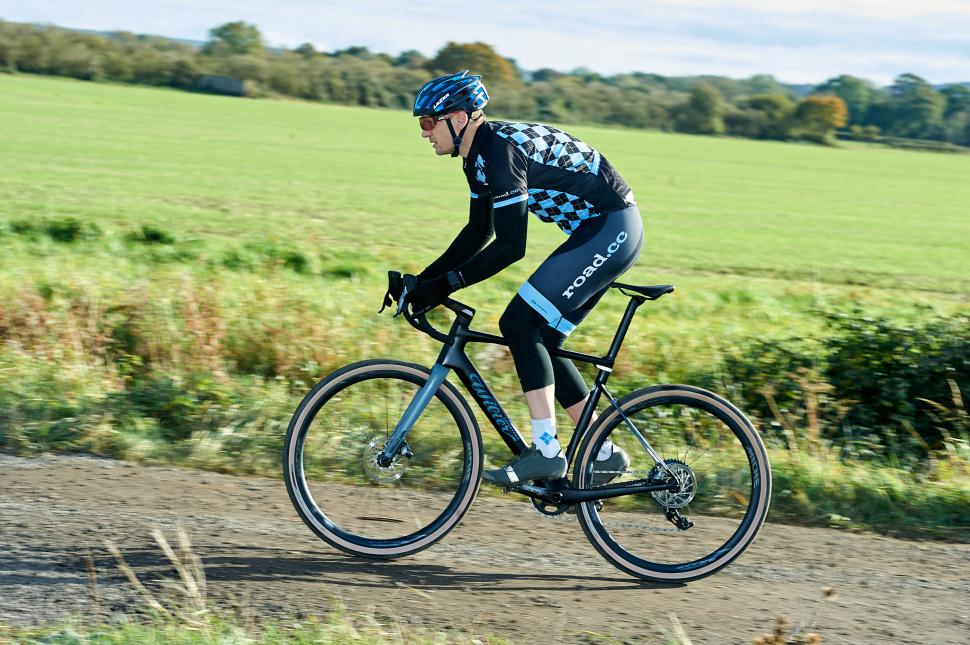


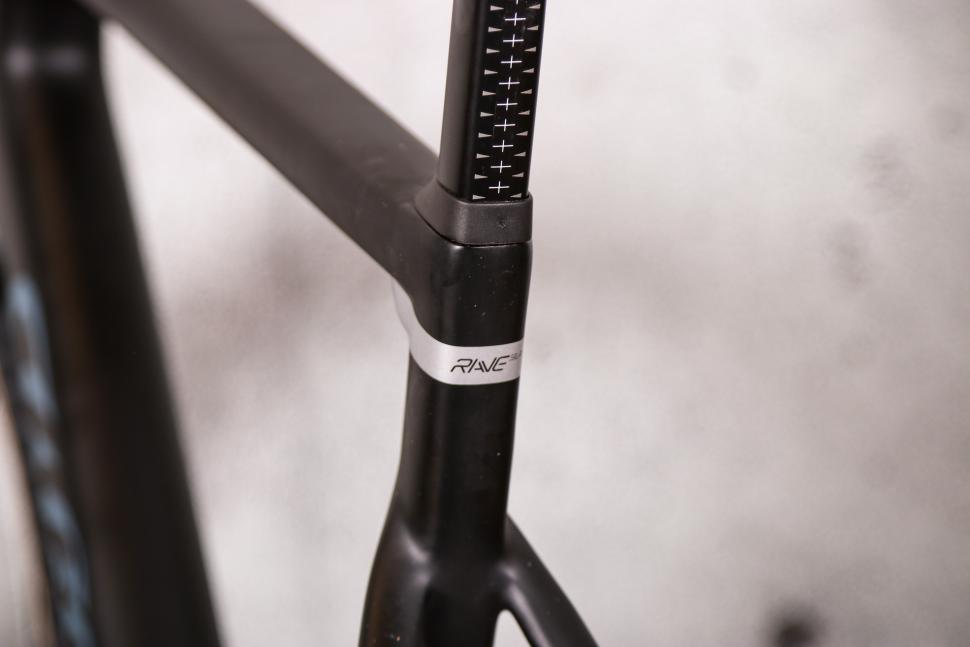













































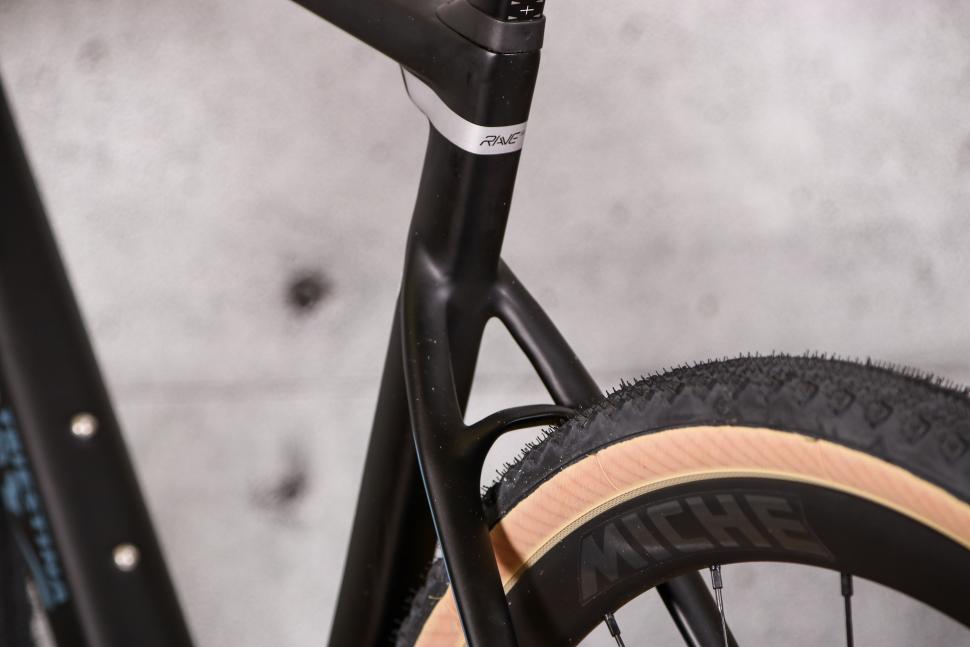
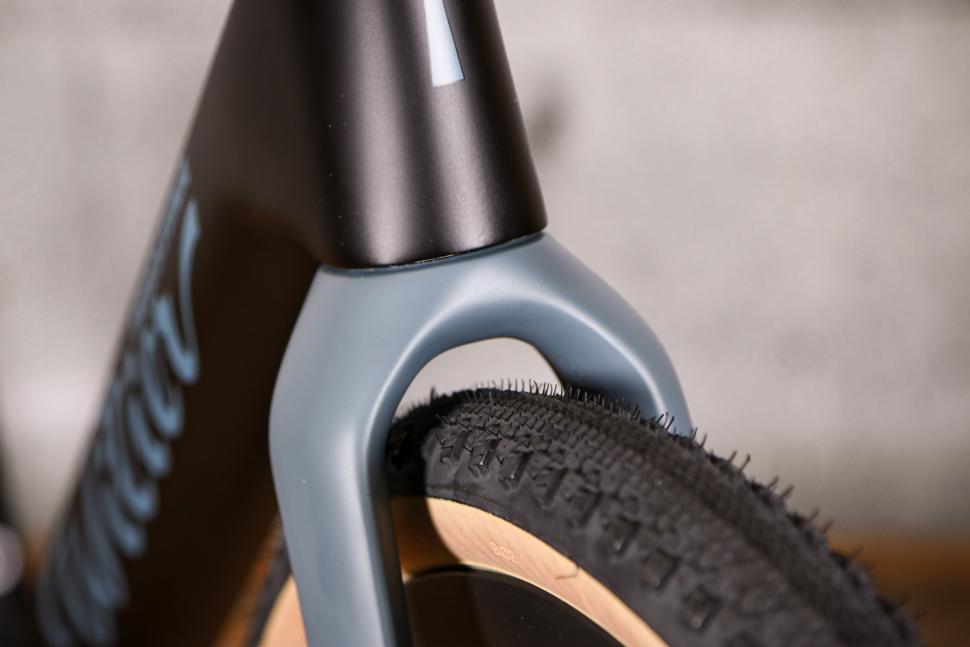
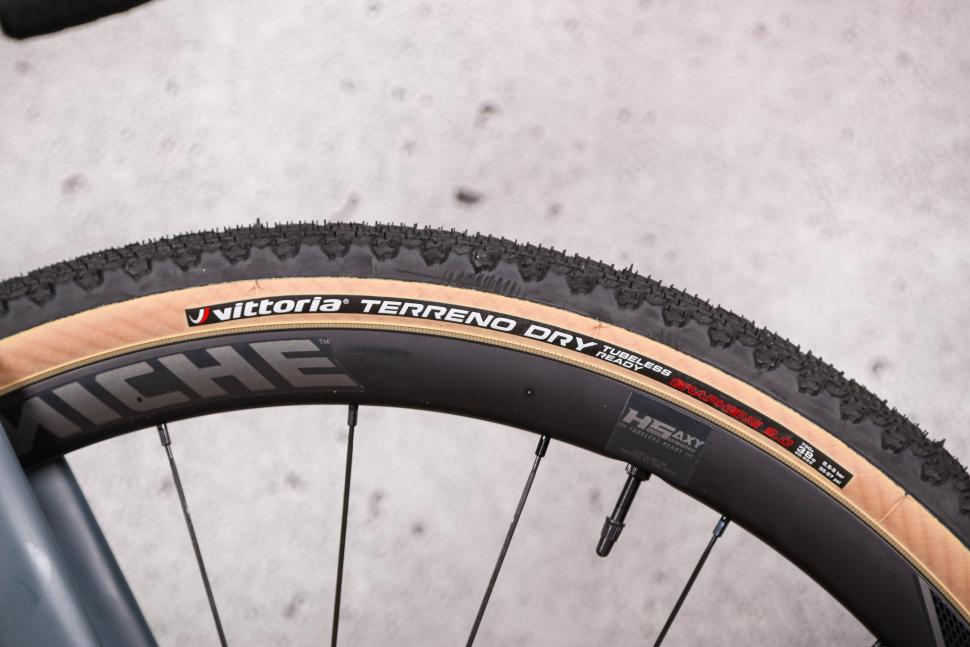
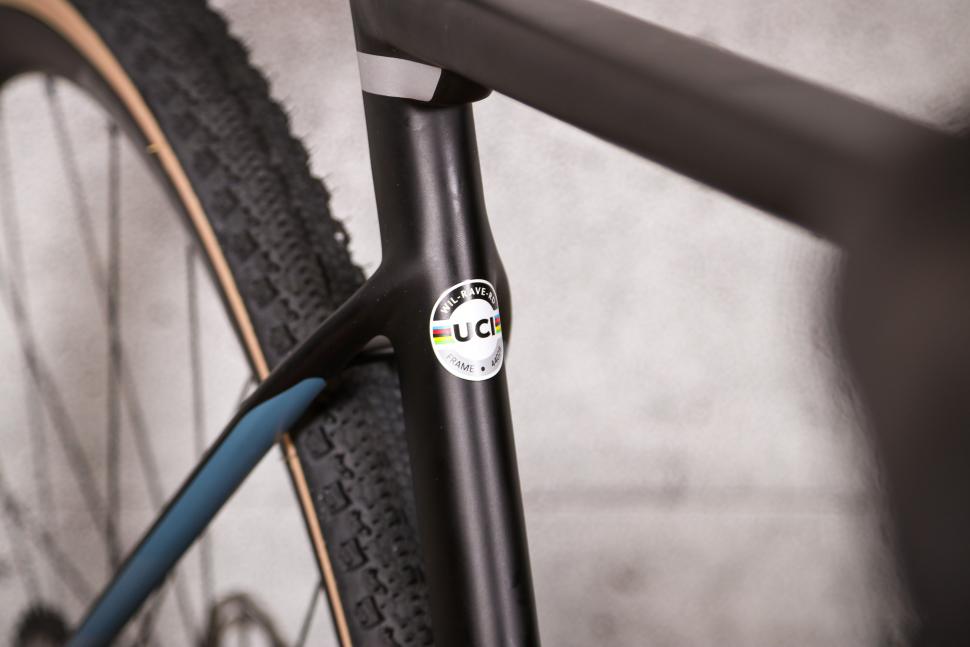

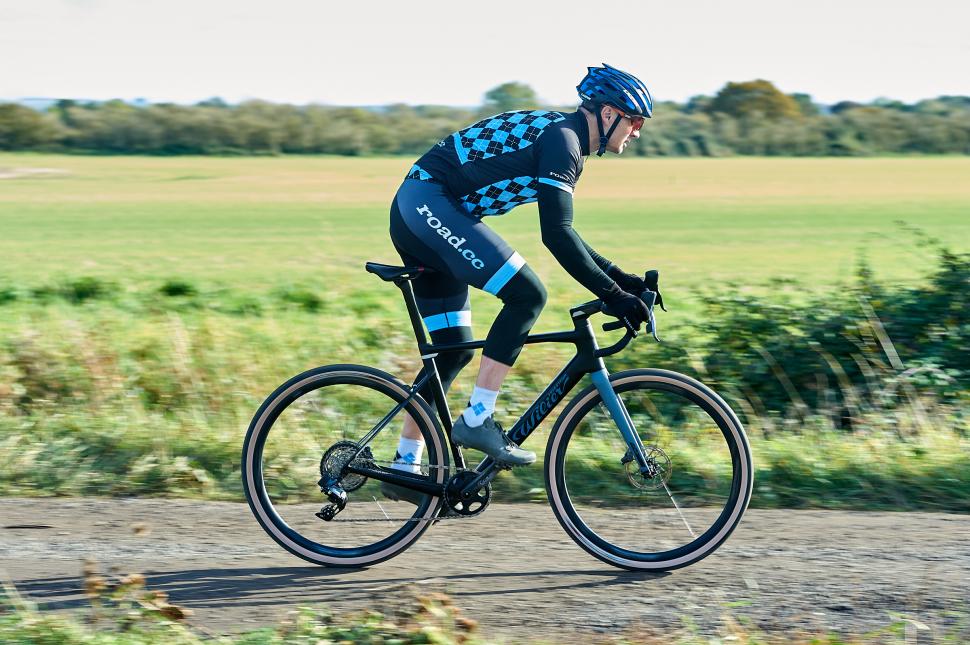
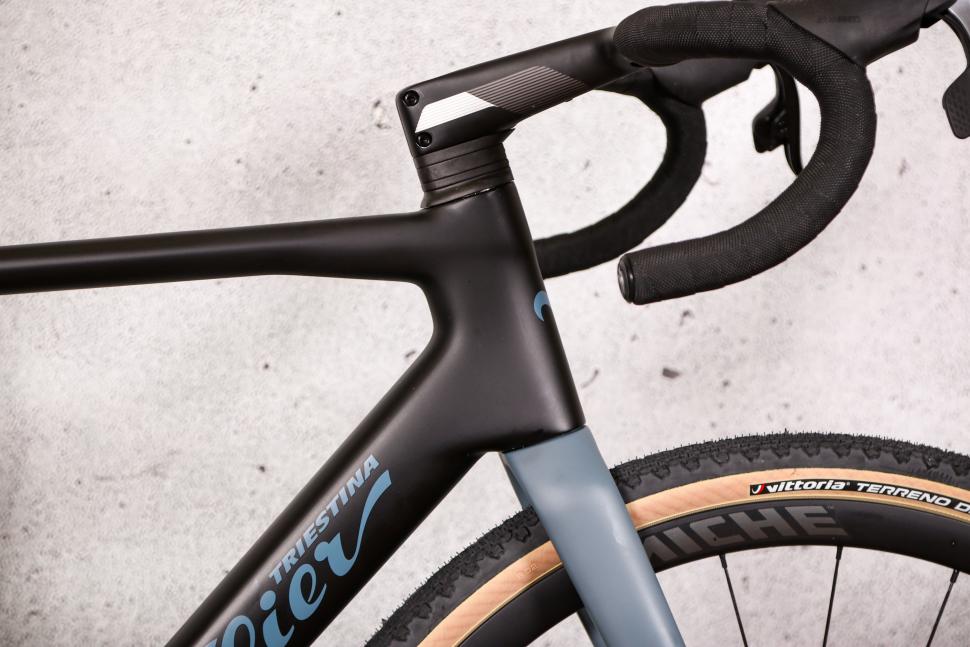
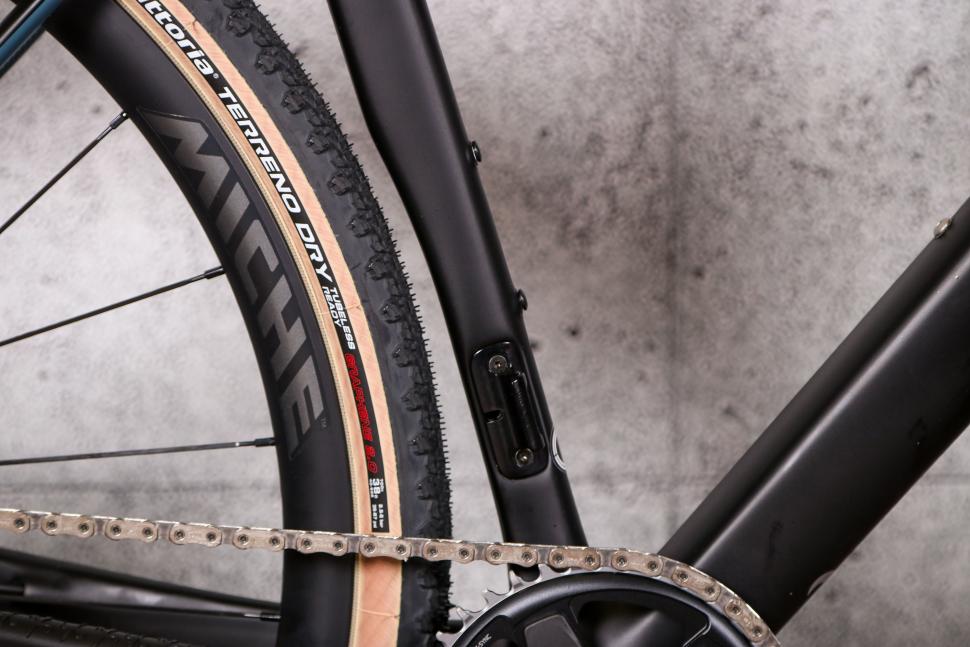

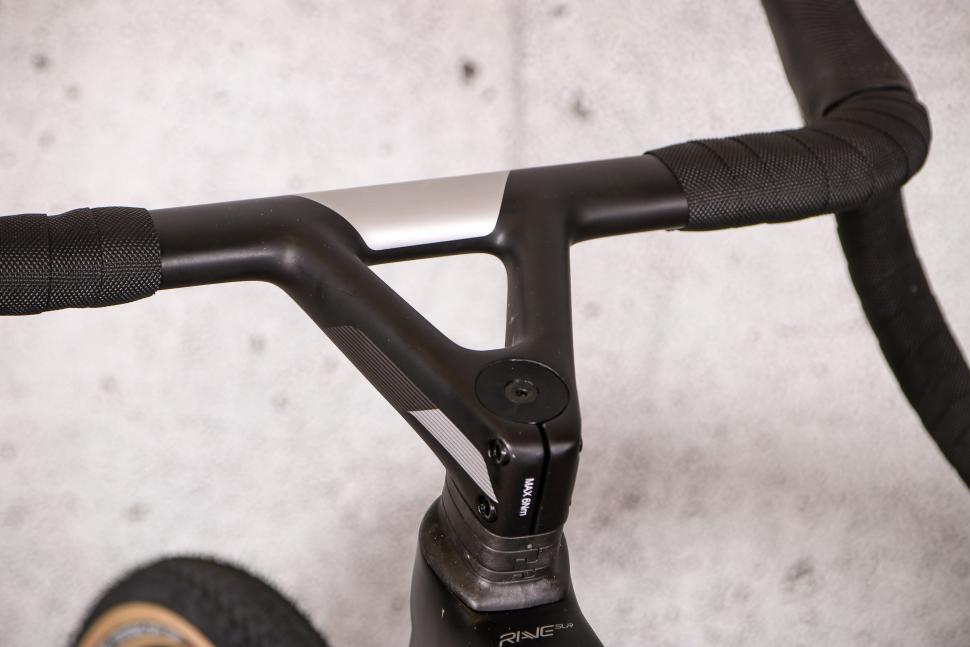


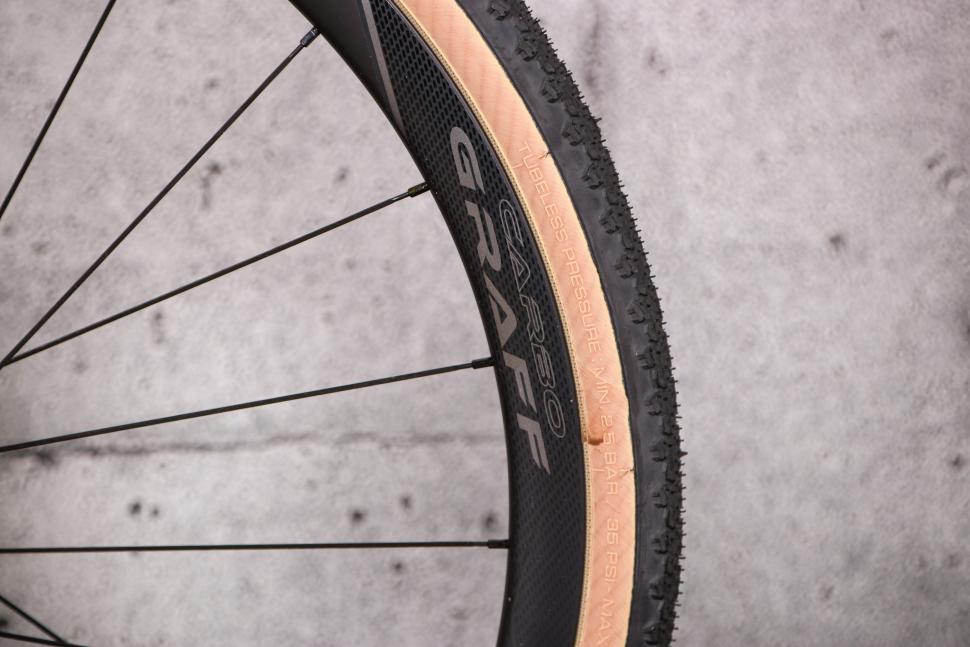
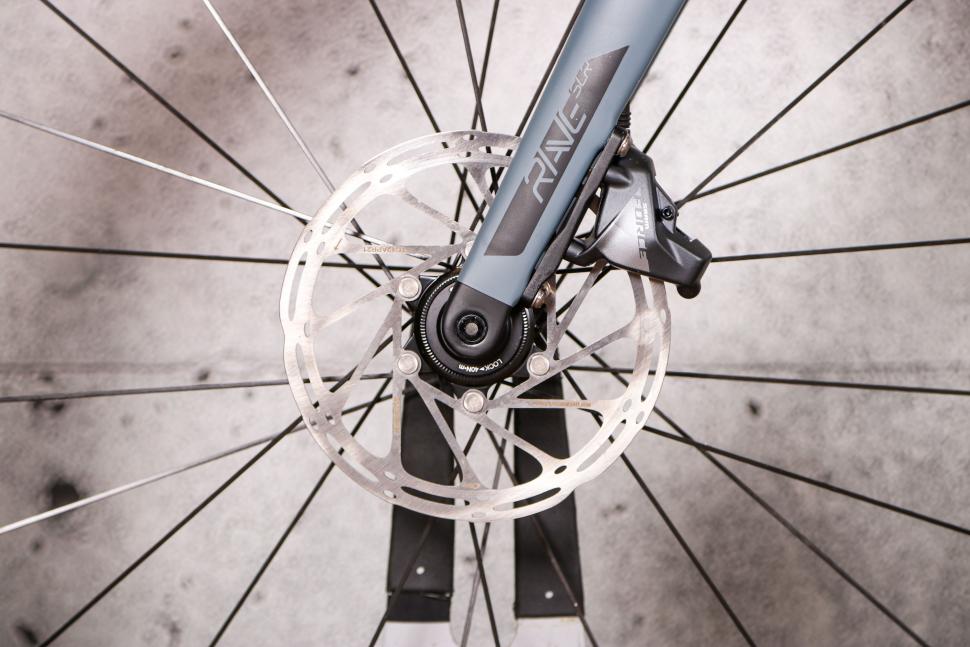
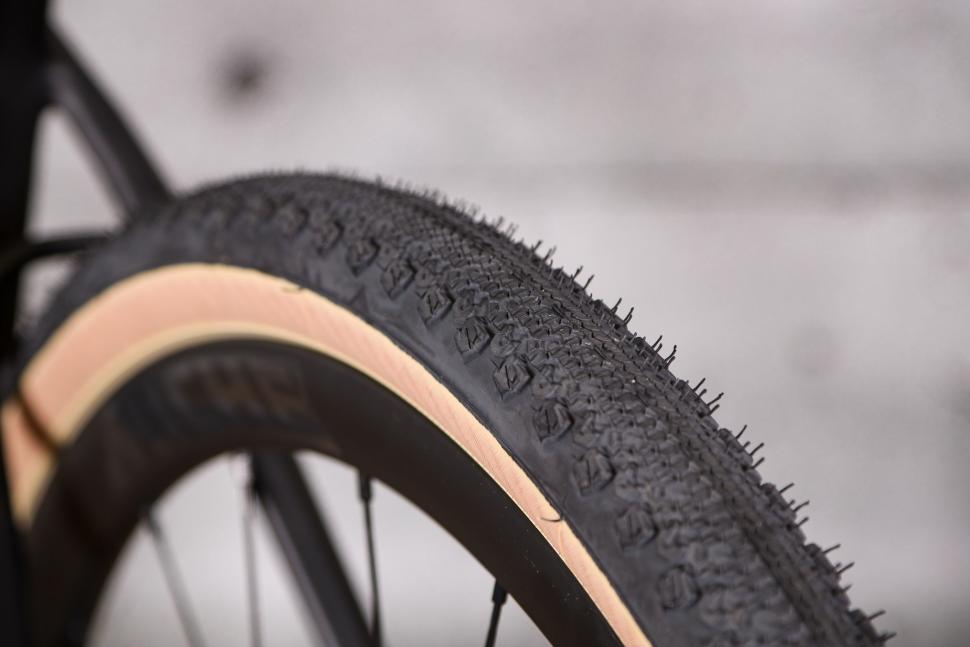
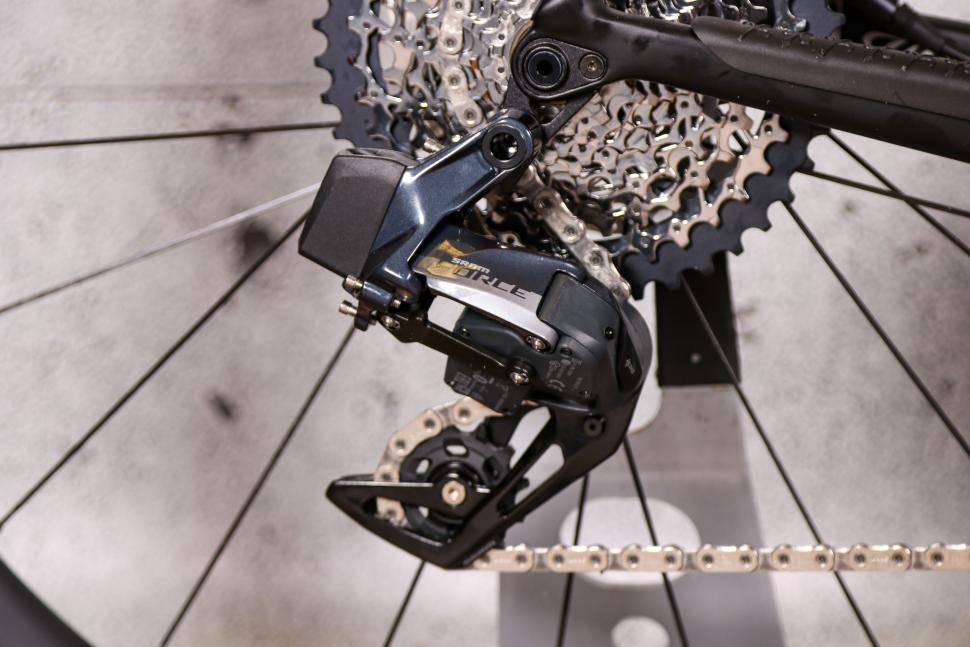
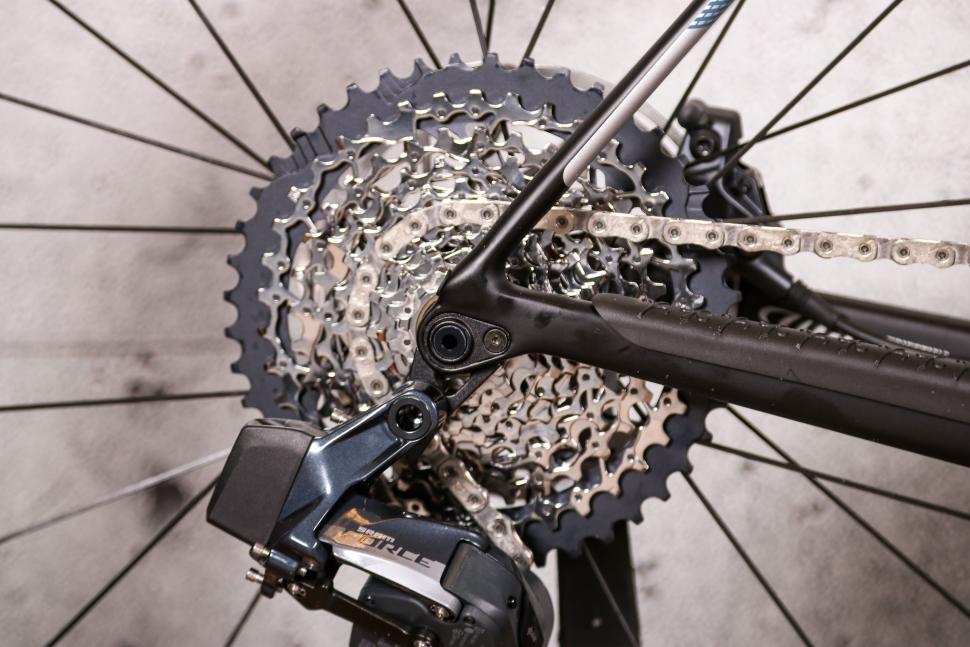
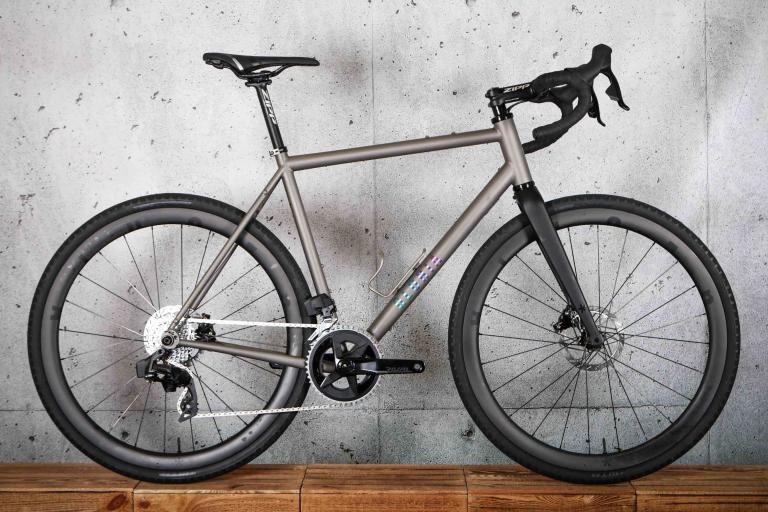
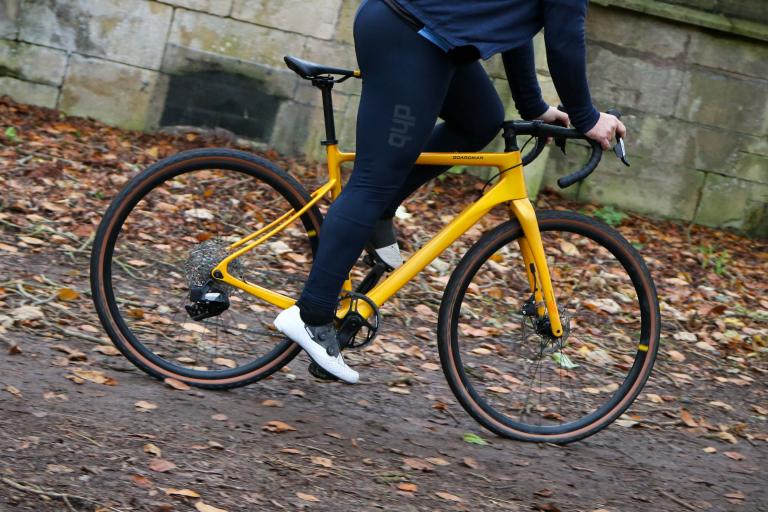

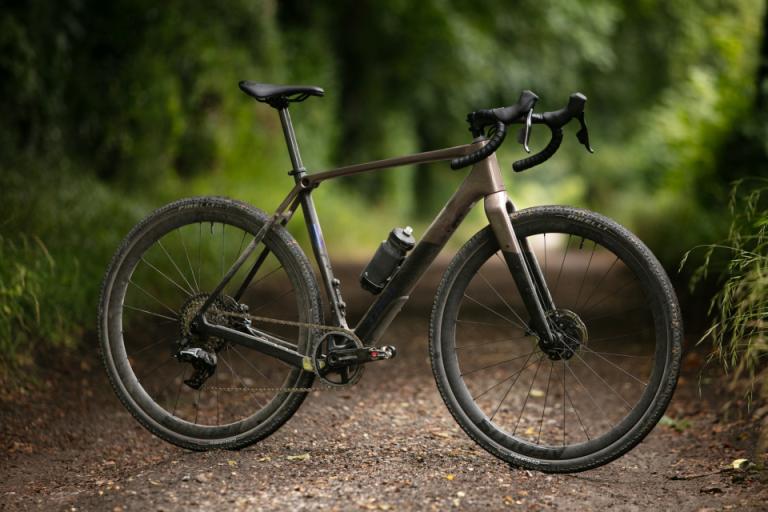
Add new comment
1 comments
The one thing I'll say about this is they marketed it (via their youtube sponsored channels) as being super versatile - you can have a good road or gravel bike...but hold on, you need to change wheels/tyres/handlebar and groupset to make a proper change...and it costs you a minimum of 8.6 grand for a single configuration. Even if you just change the wheels (which is realistically all you'll do) you'll have a near 10 grand bike that's not entirely suited to its purpose (e.g. gravel bike with gravel gearing and handlebar plus road wheels or road bike with gravel wheels but road gearing and handlebar).
If they made a cheap version then fair enough...but as it is you can get two 5 grand bikes which combined, will be far more versatile and suited to their purpose than this...